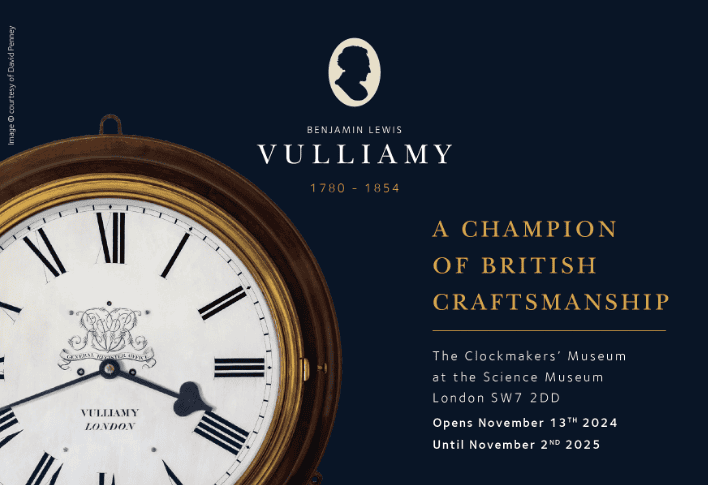A world-class collection of Benjamin Lewis Vulliamy timepieces which tell the story of the driving force behind the formation of the Clockmakers’ Museum.
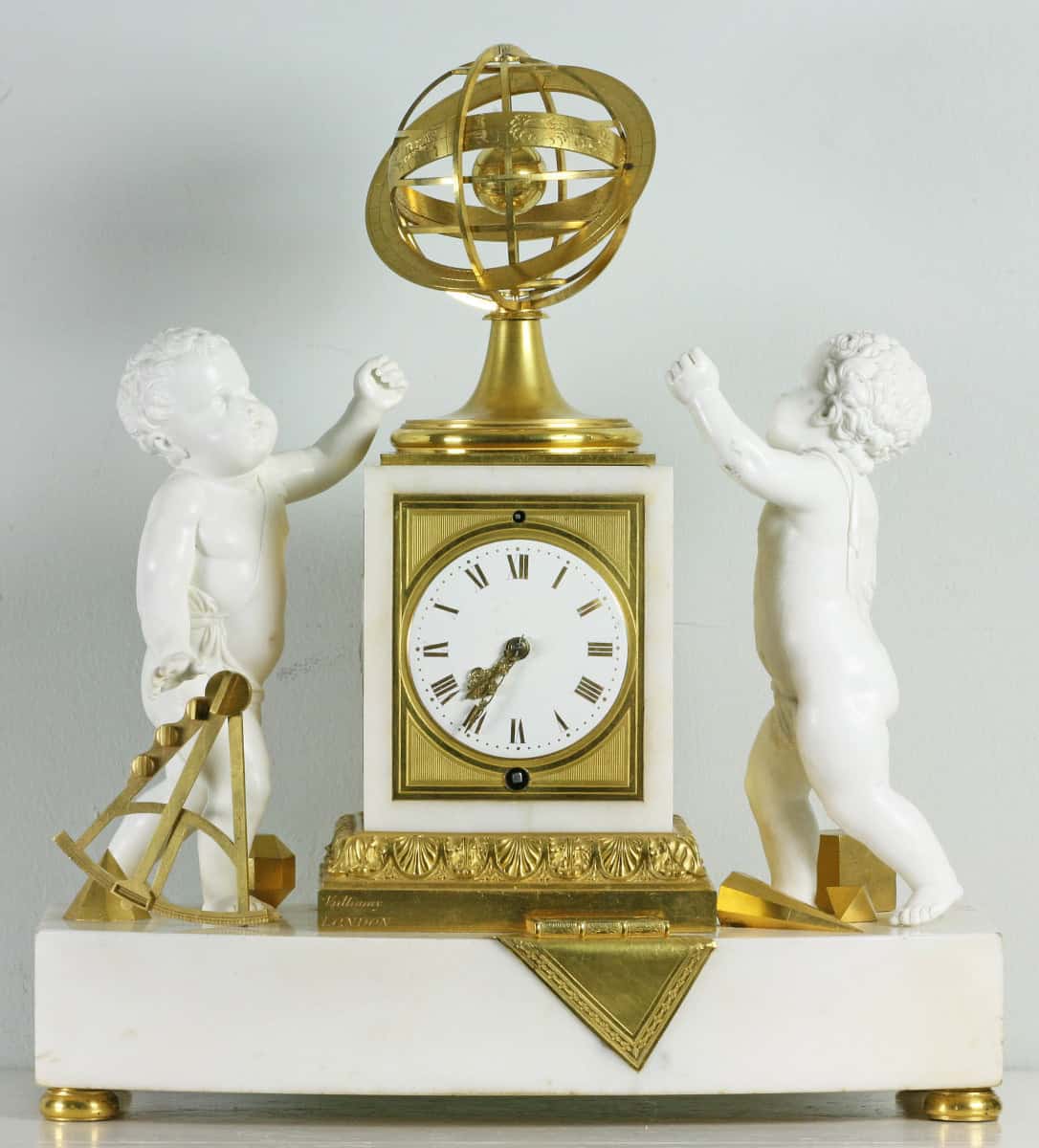
The Clockmakers’ Museum, housed at the Science Museum in South Kensington is launching its next annual programme of temporary displays, which will showcase extraordinary objects from public and private horological collections. The second of these, titled Benjamin Lewis Vulliamy: A Champion of British Craftsmanship, will open to the public on the 13th of November 2024. The display has been created to tell the story of the last of the great Vulliamy family of Royal clockmakers based at 68 Pall Mall, London, from 1753. Benjamin Lewis Vulliamy was five-times Master of the Worshipful Company of Clockmakers and a champion of British craftsmanship. He was also one of the driving forces behind the formation of the Clockmakers’ Museum.
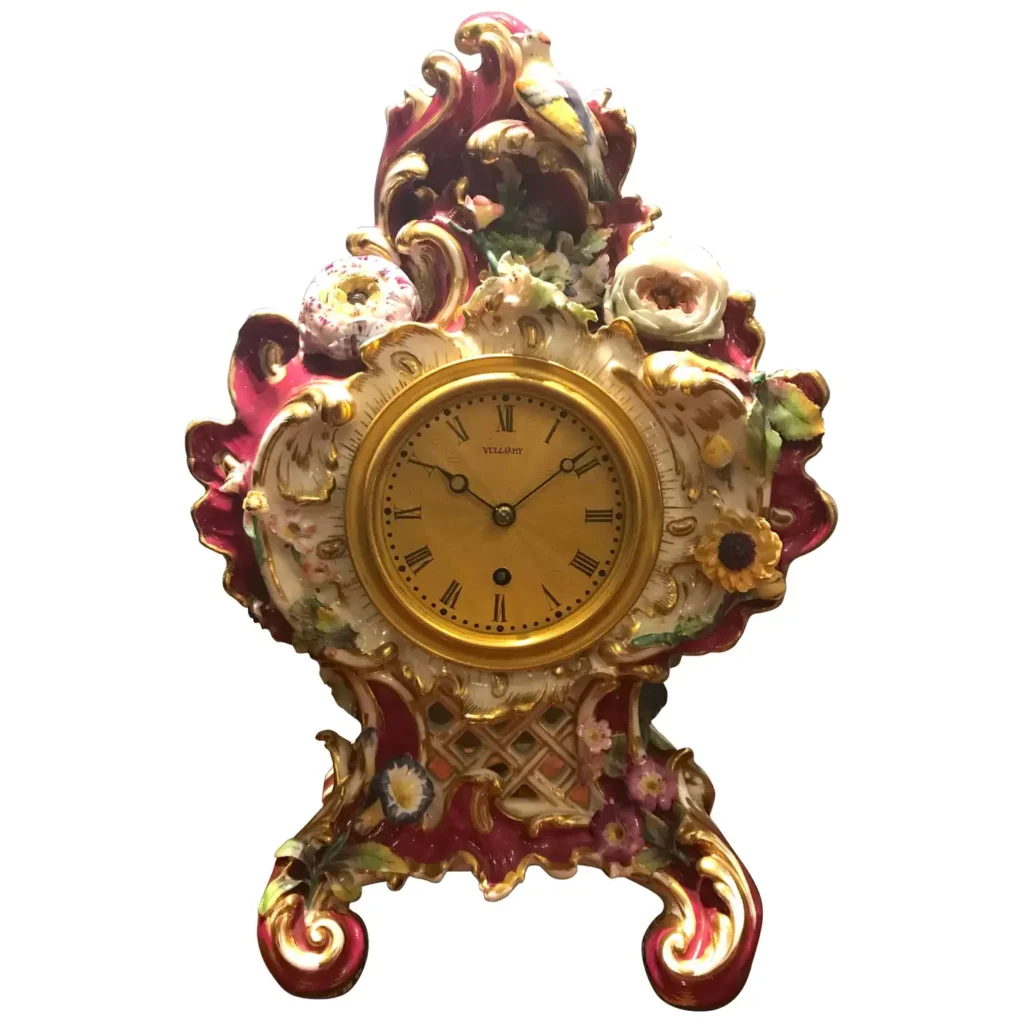
The Clockmakers’ Museum already features a world-class collection of clocks, watches and horological artefacts with the clear aim to promote the subject of horology to as wide an audience as possible and inspire the next generation of clock and watchmakers. Alongside the treasures in its existing gallery, this display gives the opportunity to show further Benjamin Lewis Vulliamy items, many of which have rarely been seen in public before. This will not only appeal to those already familiar with the collection, but also attract people from the broadest of audiences, worldwide, with interests across the most diverse elements of the subject of horology.
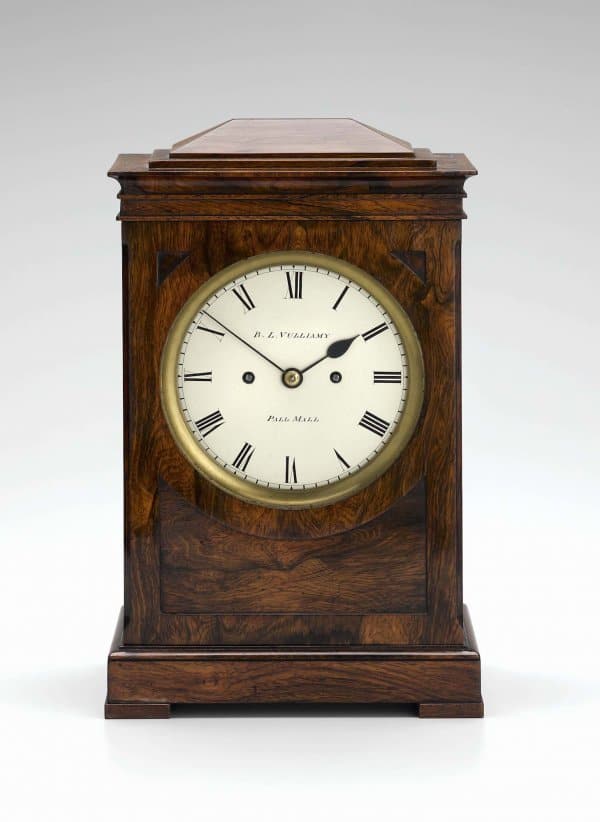
Benjamin Lewis inherited his father’s business in 1811 and following the end of the Napoleonic wars began to shift its output towards emerging new markets, particularly those brought about by the expansion of institutions such as the new Houses of Parliament, government departments and London’s exclusive members’ clubs. Overall, he aimed for high quality, reliability and accuracy in all items that left his workshop.
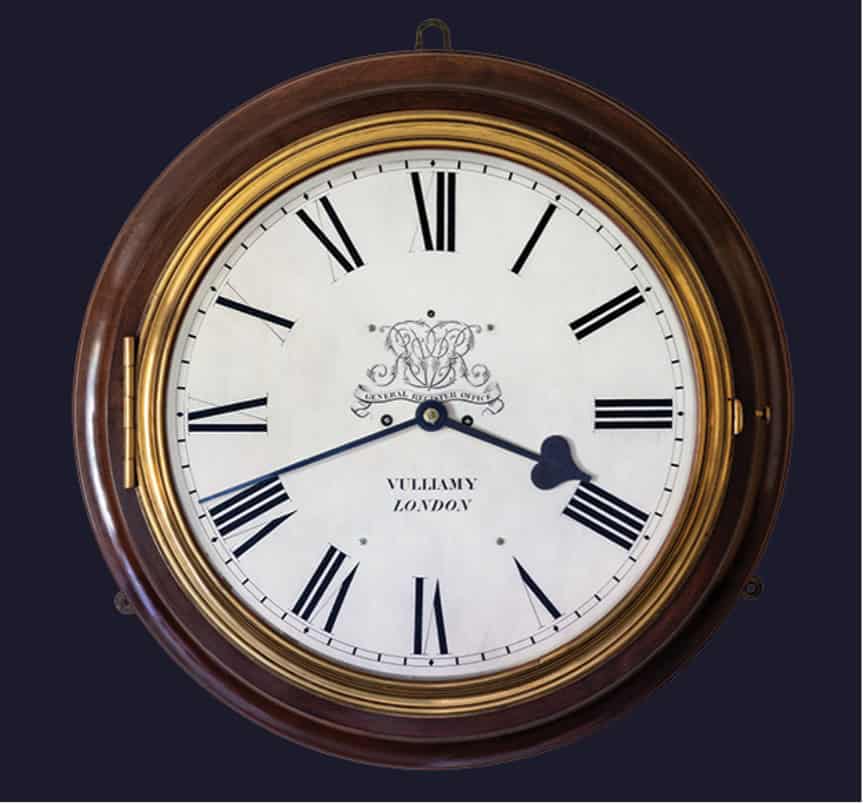
Items on display include the imposing mahogany striking wall clock No. 1394 (above). This magnificent clock was purchased for use in the General Register Office at Somerset House, which was operational from 1837 to record births, marriages and deaths for England and Wales. It was one of many government offices that Vulliamy won the contract for to supply clocks to a particular specification. The clocks were often emblazoned with the Royal monogram and the institutions names as is the case with this example.
“This display allows the Clockmakers’ Museum to celebrate Benjamin Lewis Vulliamy, who is so closely linked to the Museum’s foundation, and whose work can still be seen on so many important buildings throughout the country.”
Anna Rolls, Curator of the Clockmakers’ Museum and Archive
Vulliamy was skilled at ensuring his designs suited the changing tastes of the 19th century. He supplied clocks with cases made from materials like porcelain, ormolu and tortoiseshell, and made in the neo-Rococo style, which was in fashion throughout the mid to late Regency period, examples of which are also on display.

Benjamin Lewis had three children, but sadly none wanted to continue the family business. He became increasingly pessimistic about the future of British clockmaking in the face of growing competition but worked tirelessly to protect the British industry through his involvement with the Worshipful Company of Clockmakers. His lasting legacy will be his unwavering support in the formation of the Company’s fledgling museum collection, which has become the oldest, and some would say finest, collection of clocks and watches anywhere in the world.
“Benjamin Lewis Vulliamy produced some of the finest clocks of the nineteenth Century. He refused to compromise on the quality of his work even though this made his work incredibly expensive. In this display we celebrate the sheer variety of his output and introduce a remarkable individual.”
Dr Peter Thomas, Collections Committee Chair of the Clockmakers’ Museum and Archive
Benjamin Lewis Vulliamy: A Champion of British Craftsmanship. opens on the 13th of November in the Clockmakers’ Museum at the Science Museum, Exhibition Road, South Kensington, London, SW7 2DD
N.B. The illustrations in the article are for illustrative purposes and may not feature in the exhibition

